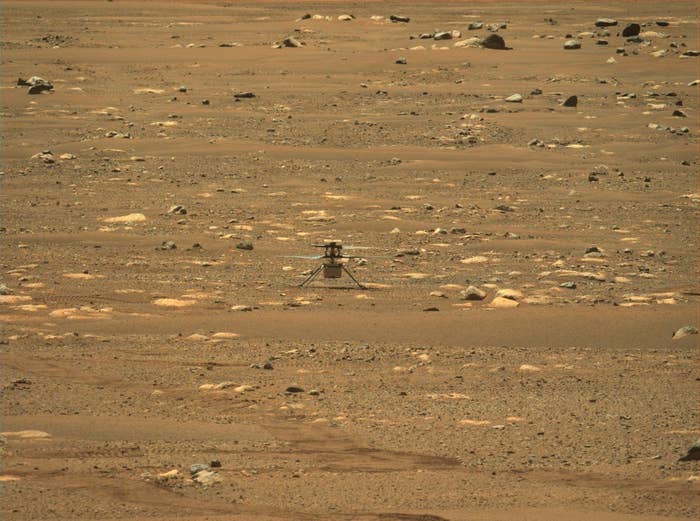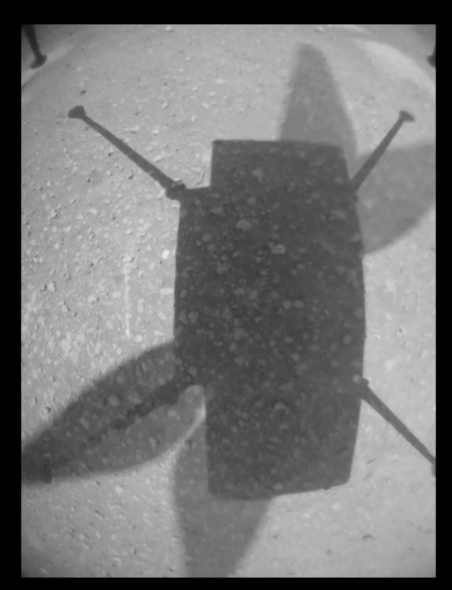
NASA's Ingenuity drone helicopter on Monday successfully flew a short test flight on Mars, the first powered flight on another planet.
"This really is a Wright Brothers moment," said Steve Jurczyk, NASA’s acting administrator, in a press conference Monday afternoon. "It’s the start of a whole new kind of planetary exploration."
NASA’s Perseverance rover released the 4-pound helicopter two weeks ago after its arrival on Mars in February. Equipped with cameras, the drone is a prototype that the space agency hopes will pioneer future flying explorers on Mars and other worlds with atmospheres.
"Ingenuity has performed its first flight — the first flight of a powered aircraft on another planet!" The data reveals: Our #MarsHelicopter has had a successful first flight: 🚁
Confirmation of the successful test flight, planned for a short ascent just 10 feet above the floor of Jezero Crater on Mars for about 40 seconds, came at 6:56 a.m. ET on Monday.
"This morning our dream came true," said MiMi Aung, the project manager of the Ingenuity Mars Helicopter. Videos of the NASA staff show them high-fiving and cheering upon news of its successful flight data.
"When things work, they look easy," Aung added. "I would like to remind everyone how difficult it is to fly a rotorcraft on Mars."
Aung explained that the atmosphere of Mars is extremely thin, equivalent to an elevation three times the height of the Himalayas. The drone had to be very small and light, weighing less than 4 pounds. Plus, much of the work was done during a pandemic when employees have been working remotely. During the news conference Monday, dozens of staffers tuned in via video.

The NASA team leaned into the Wrights Brothers moment in flying history, with the announcement that the area on Mars where Ingenuity took its first flight has been named "Wright's Brothers Field." A piece of fabric from the wing of the historic 1903 flight, the first powered flight on Earth, was carried by Ingenuity.
This is an image that just came back from #Ingenuity showing its shadow on the Martian surface
"This flight was all about proving that it was possible to fly on Mars," said Håvard Grip, the chief pilot of the Ingenuity Mars Helicopter.
Grip explained that the plan from the start was for the helicopter to take off, hover for 5 seconds, turn slightly, and then hover another 20 seconds, before landing.
"From everything we’ve seen so far it was a flawless flight," Grip said, adding that the flight had been simulated by computer hundreds, if not thousands, of times by NASA staff and that the actual flight took place "exactly the way we imagined it, it is just a really incredible feeling."

A photo taken from the bottom of the helicopter as it landed showed the surface of Mars in clear detail, which also highlighted to NASA staff that dust did not obstruct anything.
Over the next two weeks, the helicopter is expected to take another four flights on Mars to test its capabilities. The flights will be "increasingly bolder," said Aung, including flying further and faster.
"We want to push against the wind and the speed and ultimately we expect the helicopter will meet its limit," said Aung.
NASA is treating the helicopter flights similar to a tech demonstration. "We want to know the full scope of what's possible," said Thomas Zurbuchen, associate administrator of NASA’s Science Mission Directorate. "We all have a hard time finding that line between crazy and innovative."

